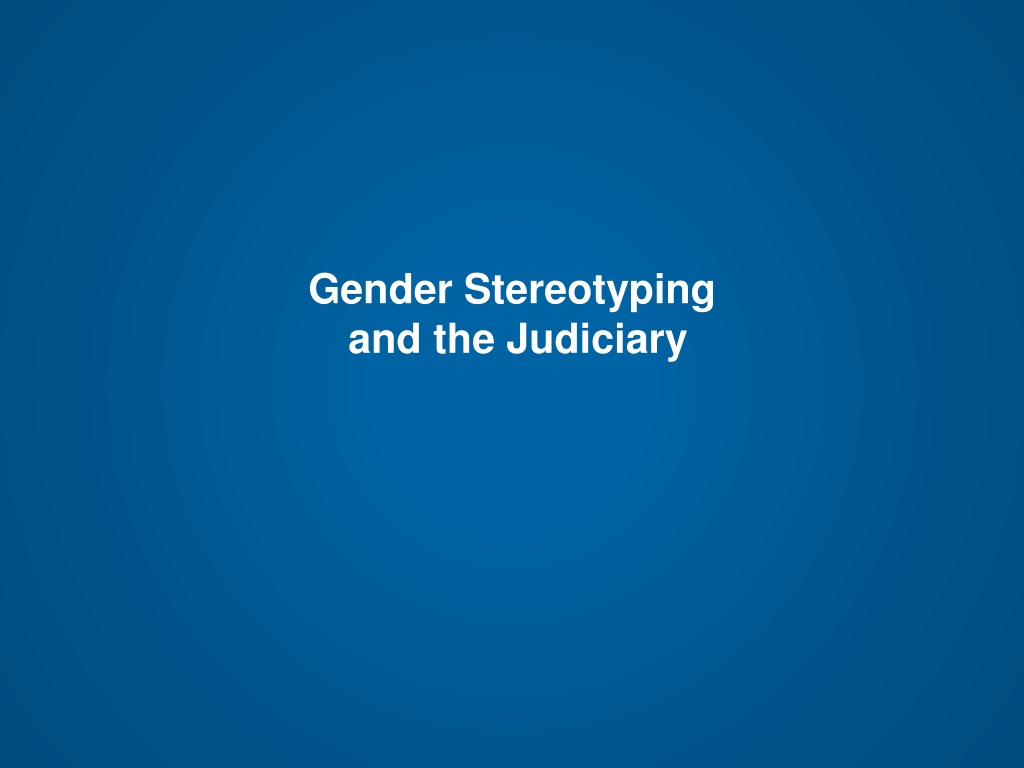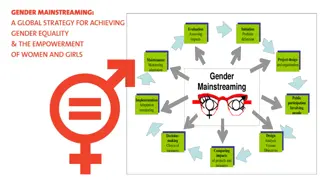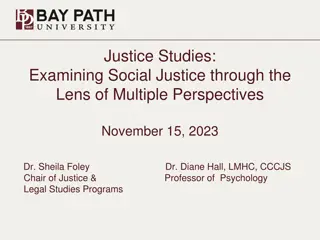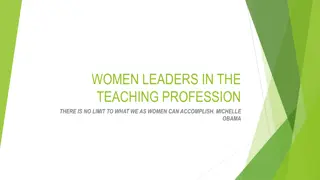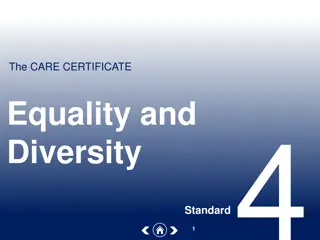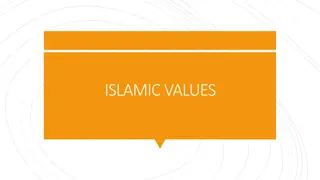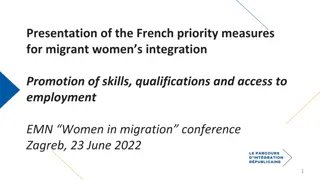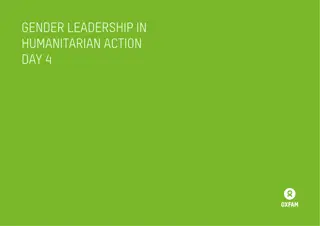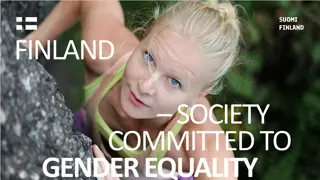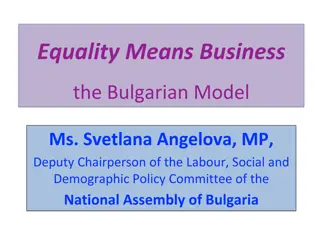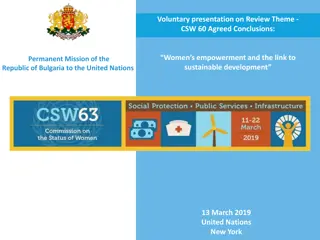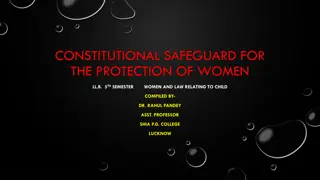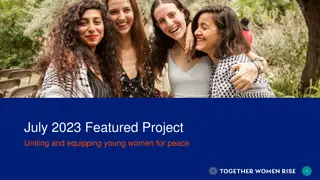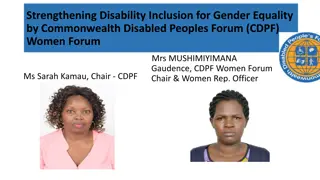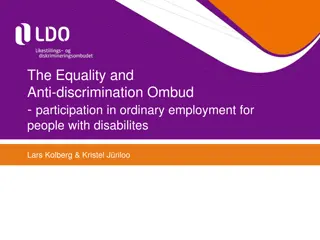Women's Access to Justice: Breaking Barriers and Promoting Equality
Women's access to justice is crucial in ensuring a fair and equal legal system. Despite persistent inequalities and barriers, efforts are being made to empower women and address gender-based discrimination. Key concepts such as gender, sex, and discrimination play a vital role in understanding and advocating for women's rights within the legal framework. Components like justiciability, accessibility, and accountability are essential for a robust justice system that caters to the needs of both men and women.
Download Presentation

Please find below an Image/Link to download the presentation.
The content on the website is provided AS IS for your information and personal use only. It may not be sold, licensed, or shared on other websites without obtaining consent from the author. Download presentation by click this link. If you encounter any issues during the download, it is possible that the publisher has removed the file from their server.
E N D
Presentation Transcript
Gender Stereotyping and the Judiciary
Session 2. Key Concepts and Women s Access to Justice 1. Key concepts 2. Women s access to justice and the barriers they may face 3. International human rights system
Key concepts Gender Sex Gender equality Gender identity Gender-based discrimination Sexual orientation Gender integration
Sex and gender Gender Socially constructed identities, attributes and roles assigned to men and women based on these biological differences. Sex Biological and physiological characteristics that typically define men and women Biological differences. Socially constructed.
Sex and gender Sex and gender discrimination are prohibited under international human rights law. Sex and gender discrimination includes discrimination against women but is not limited to it.
Womens access to justice Women s access to justice encompasses processes to ensure that the whole system is sensitive and responsive to the needs and realities of both women and men and empowers them throughout the justice chain.
Womens access to justice Women face persistent inequalities in both national and international legal systems. Justice systems tend to reflect the power imbalances inherent in any society, and they reinforce the privilege and the interests of the powerful. Women face a variety of: legal, institutional barriers socio-economic and cultural barriers in accessing justice Stereotypes represent one of the main barriers women face when accessing justice.
Components of Womens Access to Justice Justiciability Availability Accessibility Good quality Provision of remedies Accountability of justice systems
What are human rights? Universal legal guarantees; ...civil, political, economic, social and cultural; protect human values (freedom, equality, dignity) inherent to individuals and, to some extent, groups; reflected in international norms and standards; legally binding on States.
Human rights instruments ICCPR ICESCR CERD CEDAW UDHR CRC CAT CRPD CMW Regional Regimes Other International Instruments National Protection Systems Graphic taken from presentation in the UN Common Learning package.
States obligations Respect Protect Fulfill
Human Rights Mechanisms Universal Periodic Review Special Procedures Treaty Bodies
Human rights mechanisms UN treaty monitoring bodies Are committees of independent experts that monitor the implementation by the States of the core human rights treaties. Mechanisms to monitor compliance: Periodic reports (concluding observations) General comments/observations Individual cases (decisions) Inquiry procedures
Human rights mechanisms Universal Periodic Review (UPR) Involves a review of the human rights record of all UN member States. Is a universal State-driven process, under the auspices of the Human Rights Council. A report with recommendations is produced after the review of the State.
Human rights mechanisms Special Procedures Are independent human rights experts with mandates to report and advise on human rights from a thematic or country-specific perspective. They undertake country visits, receive and send communications to States, produce reports (thematic and country-specific), participate in expert meetings and advocacy.
The human rights architecture and the judiciary How is this human rights architecture connected to the judiciary at national level?
